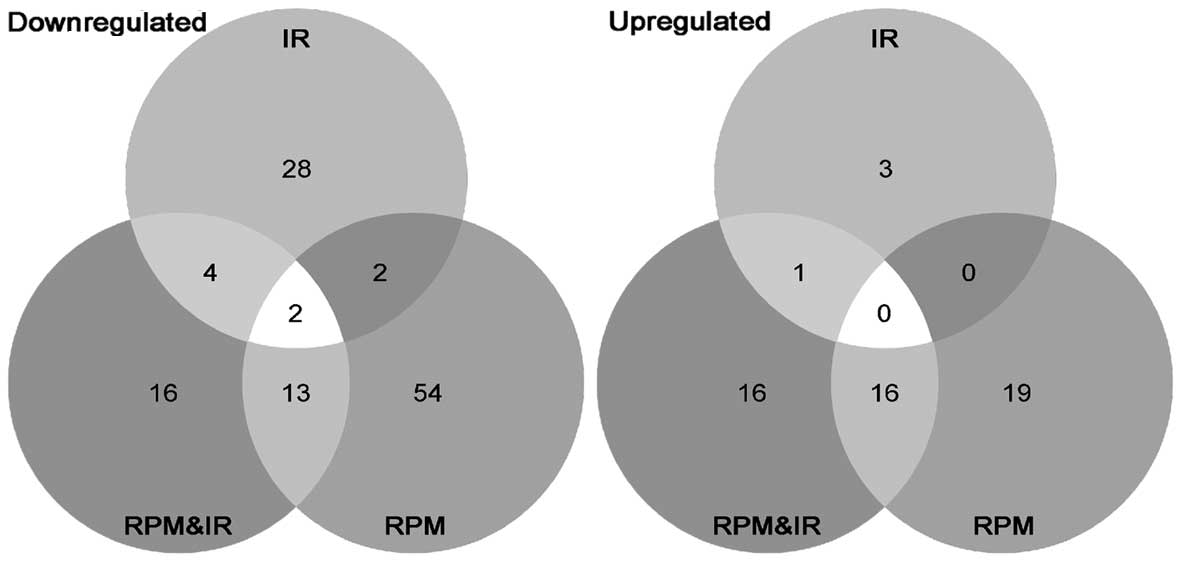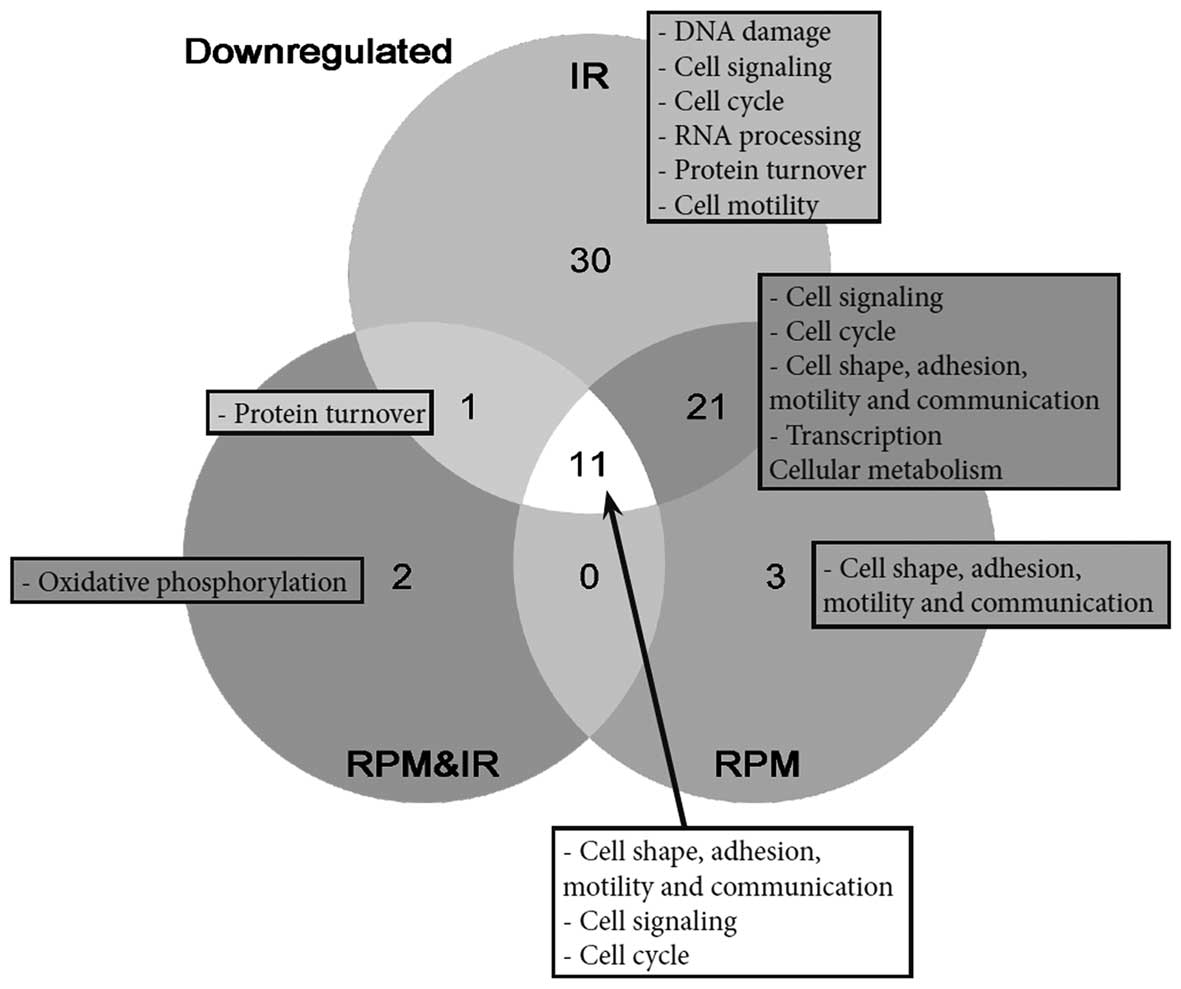|
1
|
Huijser RH: Desktop RPM: new small size
microgravity simulator for the bioscience laboratory. Fokker Space
FS-MG-R00-017. 1–5. 2000.
|
|
2
|
van Loon JJWA: Some history and use of the
random positioning machine, RPM, in gravity related research. Adv
Space Res. 39:1161–1165. 2007.
|
|
3
|
Borst A and van Loon J: Technology and
developments for the random positioning machine, RPM. Microgravity
Sci Technol. 21:287–292. 2009. View Article : Google Scholar
|
|
4
|
Kraft TF, van Loon JJ and Kiss JZ: Plastid
position in arabidopsis columella cells is similar in microgravity
and on a random-positioning machine. Planta. 211:415–422. 2000.
View Article : Google Scholar : PubMed/NCBI
|
|
5
|
Villa A, Versari S, Maier JA and
Bradamante S: Cell behavior in simulated microgravity: a comparison
of results obtained with RWV and RPM. Gravit Space Biol Bull.
18:89–90. 2005.
|
|
6
|
Grimm D, Bauer J, Ulbrich C, et al:
Different responsiveness of endothelial cells to vascular
endothelial growth factor and basic fibroblast growth factor added
to culture media under gravity and simulated microgravity. Tissue
Eng Part A. 16:1559–1573. 2010. View Article : Google Scholar
|
|
7
|
Mastroleo F, Van Houdt R, Leroy B, et al:
Experimental design and environmental parameters affect
Rhodospirillum rubrum S1H response to space flight. ISME J.
3:1402–1419. 2009. View Article : Google Scholar : PubMed/NCBI
|
|
8
|
Shi J and Walker MG: Gene set enrichment
analysis (GSEA) for interpreting gene expression profiles. Curr
Bioinform. 2:133–137. 2007. View Article : Google Scholar
|
|
9
|
Subramanian A, Tamayo P, Mootha VK, et al:
Gene set enrichment analysis: A knowledge-based approach for
interpreting genome-wide expression profiles. Proc Natl Acad Sci
USA. 102:15545–15550. 2005. View Article : Google Scholar : PubMed/NCBI
|
|
10
|
El-Saghire H, Thierens H, Monsieurs P,
Michaux A, Vandevoorde C and Baatout S: Gene set enrichment
analysis highlights different gene expression profiles in whole
blood samples X-irradiated with low and high doses. Int J Radiat
Biol. 89:628–638. 2013. View Article : Google Scholar : PubMed/NCBI
|
|
11
|
Vanhavere F, Loos M, Plompen AJM,
Wattecamps E and Thierens H: A combined use of the BD-PND and BDT
bubble detectors in neutron dosimetry. Radiat Meas. 29:573–577.
1998. View Article : Google Scholar
|
|
12
|
Cucinotta FA, Kim MH, Willingham V and
George KA: Physical and biological organ dosimetry analysis for
international space station astronauts. Radiat Res. 170:127–138.
2008. View
Article : Google Scholar : PubMed/NCBI
|
|
13
|
Crawford-Young SJ: Effects of microgravity
on cell cytoskeleton and embryogenesis. Int J Dev Biol. 50:183–191.
2006. View Article : Google Scholar : PubMed/NCBI
|
|
14
|
Meloni MA, Galleri G, Pani G, Saba A,
Pippia P and Cogoli-Greuter M: Space flight affects motility and
cytoskeletal structures in human monocyte cell line J-111.
Cytoskeleton (Hoboken). 68:125–137. 2011. View Article : Google Scholar : PubMed/NCBI
|
|
15
|
Hayes JD and McLellan LI: Glutathione and
glutathione-dependent enzymes represent a co-ordinately regulated
defence against oxidative stress. Free Radic Res. 31:273–300. 1999.
View Article : Google Scholar : PubMed/NCBI
|
|
16
|
Chen Y, Johansson E, Fan Y, et al: Early
onset senescence occurs when fibroblasts lack the
glutamate-cysteine ligase modifier subunit. Free Radic Biol Med.
47:410–418. 2009. View Article : Google Scholar : PubMed/NCBI
|
|
17
|
Haines DD, Lekli I, Teissier P, Bak I and
Tosaki A: Role of haeme oxygenase-1 in resolution of oxidative
stress-related pathologies: Focus on cardiovascular, lung,
neurologic and kidney disorders. Acta Physiol (Oxf). 204:487–501.
2012. View Article : Google Scholar
|
|
18
|
Lee JC, Kinniry PA, Arguiri E, et al:
Dietary curcumin increases antioxidant defenses in lung,
ameliorates radiation-induced pulmonary fibrosis, and improves
survival in mice. Radiat Res. 173:590–601. 2010. View Article : Google Scholar : PubMed/NCBI
|
|
19
|
Hayes JD and McMahon M: NRF2 and KEAP1
mutations: permanent activation of an adaptive response in cancer.
Trends Biochem Sci. 34:176–188. 2009. View Article : Google Scholar : PubMed/NCBI
|
|
20
|
Wang J, Zhang J, Bai S, et al: Simulated
microgravity promotes cellular senescence via oxidant stress in rat
PC12 cells. Neurochem Int. 55:710–716. 2009. View Article : Google Scholar : PubMed/NCBI
|
|
21
|
Nikawa T, Ishidoh K, Hirasaka K, et al:
Skeletal muscle gene expression in space-flown rats. FASEB J.
18:522–524. 2004.PubMed/NCBI
|
|
22
|
Liu Y and Wang E: Transcriptional analysis
of normal human fibroblast responses to microgravity stress.
Genomics Proteomics Bioinformatics. 6:29–41. 2008. View Article : Google Scholar : PubMed/NCBI
|
|
23
|
Carson JA, Culberson DE, Thompson RW,
Fillmore RA and Zimmer W: Smooth muscle gamma-actin promoter
regulation by RhoA and serum response factor signaling. Biochim
Biophys Acta. 1628:133–139. 2003. View Article : Google Scholar
|
|
24
|
Philippar U, Schratt G, Dieterich C, et
al: The SRF target gene Fhl2 antagonizes RhoA/MAL-dependent
activation of SRF. Mol Cell. 16:867–880. 2004. View Article : Google Scholar : PubMed/NCBI
|
|
25
|
Beamish JA, He P, Kottke-Marchant K and
Marchant RE: Molecular regulation of contractile smooth muscle cell
phenotype: implications for vascular tissue engineering. Tissue Eng
Part B Rev. 16:467–491. 2010. View Article : Google Scholar : PubMed/NCBI
|
|
26
|
Olson EN and Nordheim A: Linking actin
dynamics and gene transcription to drive cellular motile functions.
Nat Rev Mol Cell Biol. 11:353–365. 2010. View Article : Google Scholar
|
|
27
|
Sun Q, Chen G, Streb JW, et al: Defining
the mammalian CArGome. Genome Res. 16:197–207. 2006. View Article : Google Scholar : PubMed/NCBI
|
|
28
|
Ingber DE: Tensegrity II. How structural
networks influence cellular information processing networks. J Cell
Sci. 116:1397–1408. 2003. View Article : Google Scholar : PubMed/NCBI
|
|
29
|
Meloni MA, Galleri G, Pippia P and
Cogoli-Greuter M: Cytoskeleton changes and impaired motility of
monocytes at modelled low gravity. Protoplasma. 229:243–249. 2006.
View Article : Google Scholar : PubMed/NCBI
|
|
30
|
Servotte S, Zhang Z, Lambert CA, et al:
Establishment of stable human fibroblast cell lines constitutively
expressing active rho-GTPases. Protoplasma. 229:215–220. 2006.
View Article : Google Scholar
|
|
31
|
Nichols HL, Zhang N and Wen X: Proteomics
and genomics of microgravity. Physiol Genomics. 26:163–171. 2006.
View Article : Google Scholar : PubMed/NCBI
|
|
32
|
Loesberg WA, Walboomers XF, van Loon JJWA
and Jansen JA: Simulated microgravity activates MAPK pathways in
fibroblasts cultured on microgrooved surface topography. Cell Motil
Cytoskeleton. 65:116–129. 2008. View
Article : Google Scholar : PubMed/NCBI
|
|
33
|
Hall A: Rho GTPases and the control of
cell behaviour. Biochem Soc Trans. 33:891–895. 2005. View Article : Google Scholar : PubMed/NCBI
|
|
34
|
Jeggo P: The role of the DNA damage
response mechanisms after low-dose radiation exposure and a
consideration of potentially sensitive individuals. Radiat Res.
174:825–832. 2010. View
Article : Google Scholar : PubMed/NCBI
|
|
35
|
Jeggo P and Lavin MF: Cellular
radiosensitivity: how much better do we understand it? Int J Radiat
Biol. 85:1061–1081. 2009. View Article : Google Scholar : PubMed/NCBI
|
|
36
|
Grimm D, Wise P, Lebert M, Richter P and
Baatout S: How and why does the proteome respond to microgravity?
Expert Rev Proteomics. 8:13–27. 2011. View Article : Google Scholar : PubMed/NCBI
|
|
37
|
Gabryś, Greco O, Patel G, Prise KM, Tozer
GM and Kanthou C: Radiation effects on the cytoskeleton of
endothelial cells and endothelial monolayer permeability. Int J
Radiat Oncol Biol Phys. 69:1553–1562. 2007.PubMed/NCBI
|
|
38
|
Rousseau M, Gaugler MH, Rodallec A,
Bonnaud S, Paris F and Corre I: Rhoa GTPase regulates
radiation-induced alterations in endothelial cell adhesion and
migration. Biochem Biophys Res Commun. 414:750–755. 2011.
View Article : Google Scholar : PubMed/NCBI
|
|
39
|
Etienne-Manneville S and Hall A: Rho
GTPases in cell biology. Nature. 420:629–635. 2002. View Article : Google Scholar
|











